The Methane Detectives: On the Trail of a Global Warming Mystery
Every week, dozens of metal flasks arrive at NOAA’s Earth System Research Laboratory in Boulder, Colorado, each one loaded with air from a distant corner of the world. Research chemist Ed Dlugokencky and his colleagues in the Global Monitoring Division catalog the canisters, and then use a series of high-precision tools — a gas chromatograph, a flame ionization detector, sophisticated software — to measure how much carbon dioxide, nitrous oxide, and methane each flask contains.
These air samples — collected at observatories in Hawaii, Alaska, American Samoa, and Antarctica, and from tall towers, small aircraft, and volunteers on every continent — have been coming to Boulder for more than four decades, as part of one of the world’s longest-running greenhouse gas monitoring programs. The air in the flasks shows that the concentration of methane in the atmosphere had been steadily rising since 1983, before levelling off around 2000. “And then, boom, look at how it changes here,” Dlugokencky says, pointing at a graph on his computer screen. “This is really an abrupt change in the global methane budget, starting around 2007.”
The amount of methane in the atmosphere has been increasing ever since. And nobody really knows why. What’s more, no one saw it coming. Methane levels have been climbing more steeply than climate experts anticipated, to a degree “so unexpected that it was not considered in pathway models preparatory to the Paris Agreement,” as Dlugokencky and several co-authors noted in a recently published paper.
As the years plod on and the methane piles up, solving this mystery has taken on increasing urgency. Over a 20-year-time frame, methane traps 86 times as much heat in the atmosphere as carbon dioxide. It is responsible for about a quarter of total atmospheric warming to date. And while the steady increases in atmospheric carbon dioxide and nitrous oxide are deeply worrying, they are at least conforming to scientists’ expectations. Methane is not. Methane — arguably humanity’s earliest signature on the climate — is the wild card.
Humans have been producing methane for thousands of years, by clearing land with fires, raising cattle, and growing rice. Thanks to air bubbles trapped in ice cores taken from Antarctica, we know that the global average methane concentration in the atmosphere has nearly tripled in response. Because it only lasts about a decade in the atmosphere, cutting methane is a relatively fast-acting lever for slowing climate change. But it isn’t clear how we should pull that lever.
Scientists continue to offer competing hypotheses to explain the global uptick, and there is no shortage of potential suspects. “The really fascinating thing about methane,” says Lori Bruhwiler, a NOAA research scientist, “is the fact that almost everything we humans do has an effect on the methane budget, from producing food to producing fuel to disposing of waste.”
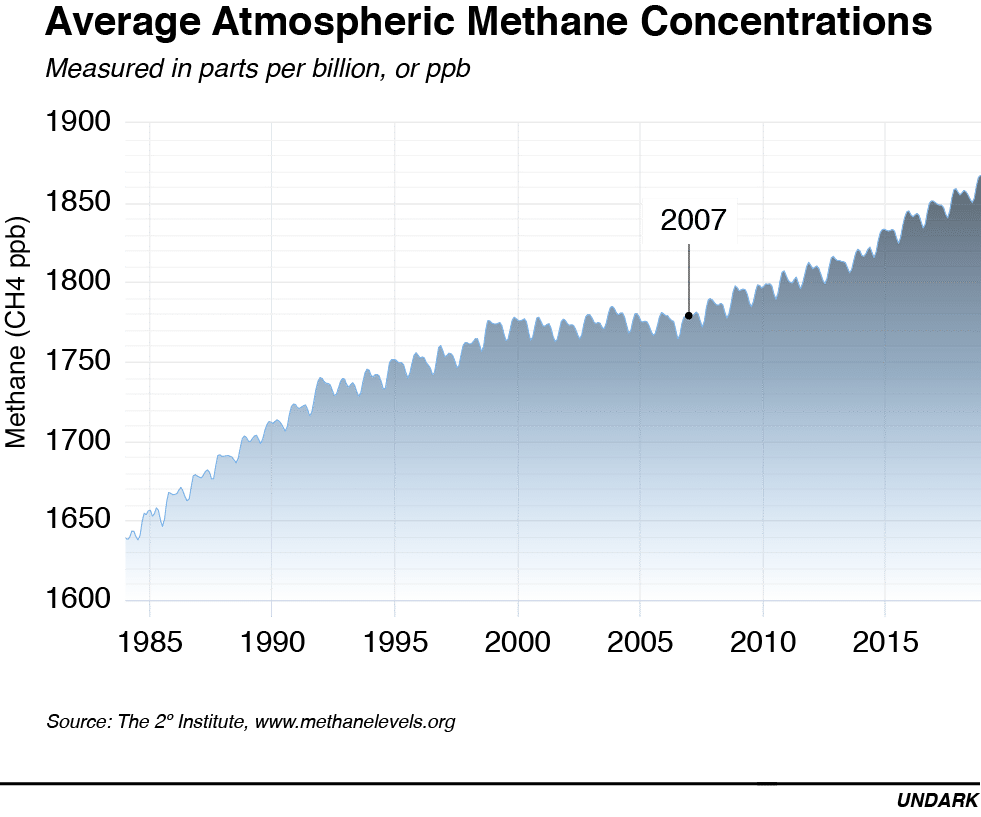
Humans are directly responsible for about 60 percent of global emissions of methane. It seeps from rotting food waste in landfills, from anaerobic lagoons of pig manure, from rice paddies and exposed coal seams. Livestock belch it out as a byproduct of their digestion. It streams out of the vast metallic exoskeleton of oil and gas wells, pumping stations, pipelines, and refineries that entwine the globe.
The balance comes from natural sources — wetlands, rivers and lakes, wildfires, termites, geological seeps, thawing permafrost. Wetlands are the largest single source, contributing about 30 percent of total methane emissions globally. As it happens, they are also the biggest source of uncertainty when it comes to the carbon budget, according to Benjamin Poulter, a NASA researcher and contributor to the Global Carbon Project, an international consortium of scientists that publishes one of the most widely cited estimates of the global methane budget. This uncertainty can make the debate over what’s driving the increase seem like a highly educated guessing game.
“There are so many hypotheses and high impact papers out just in the last two years that cover the whole range of explanations for why there’s this renewed growth,” Poulter says.
Thanks to the careful measurements of NOAA scientists and others, we know that there are about 1,850 molecules of methane in the atmosphere for every billion molecules of air — typically shorthanded as parts per billion, or ppb — in today’s atmosphere. That’s compared to about 700 parts per billion in the pre-industrial era. But the processes behind today’s number are much less visible. It’s like knowing the final score of a game, but not who scored what and how.
Getting answers is not simply an academic exercise; it’s crucial to knowing just what humanity might be facing as the planet continues to warm. “We need to have process representation to understand these mechanisms,” says Eric Kort, an atmospheric scientist at the University of Michigan, “so we can say, for example, with certain changes to temperature and the hydrological cycle, we’d expect methane emissions to increase by X amount.” Without that understanding, Kort suggests, we’re unable to answer some important questions about what looms ahead. “Is atmospheric methane increasing as a consequence of climate change, not of our direct emissions? Are some thresholds being passed?”
“It is a wicked problem,” Kort adds, “but it’s not unsolvable.”
Any convincing explanation needs to answer three questions. What explains the long-term increase in methane levels over the past 40 years? Why was there a pause? And why was there such an abrupt surge after 2006? Only three elements of the global methane budget are large enough to be plausible culprits: microbial emissions (from livestock, agriculture, and wetlands); fossil fuel emissions; and the chemical process by which methane is scrubbed from the atmosphere.
The first theory to gain traction pinned the blame on fossil fuels, based on some suspicious timing: The use of horizontal drilling and hydraulic fracturing — a method of harvesting buried hydrocarbons that involves blasting deep layers of rock with a cocktail of water, sand, and chemicals — surged in the U.S. oil and gas industry right around the time atmospheric methane levels shot up. Other scientists, however, are convinced that growing herds of livestock, which produce methane-rich belches and manure — are to blame. Some researchers pore over satellite data for evidence that methane production from natural sources, such as wetlands and wildfires, is changing.
And still others argue that the culprit isn’t a surging source at all, but the steady, or perhaps very sudden disappearance of a traditional methane “sink.” After an average residence time of about a decade, methane is oxidized into carbon dioxide and water vapor through chemical reactions with hydroxyl radical (OH). This atmospheric removal process may be weakening, though, possibly because OH levels are declining due to reactions with other anthropogenic pollutants.
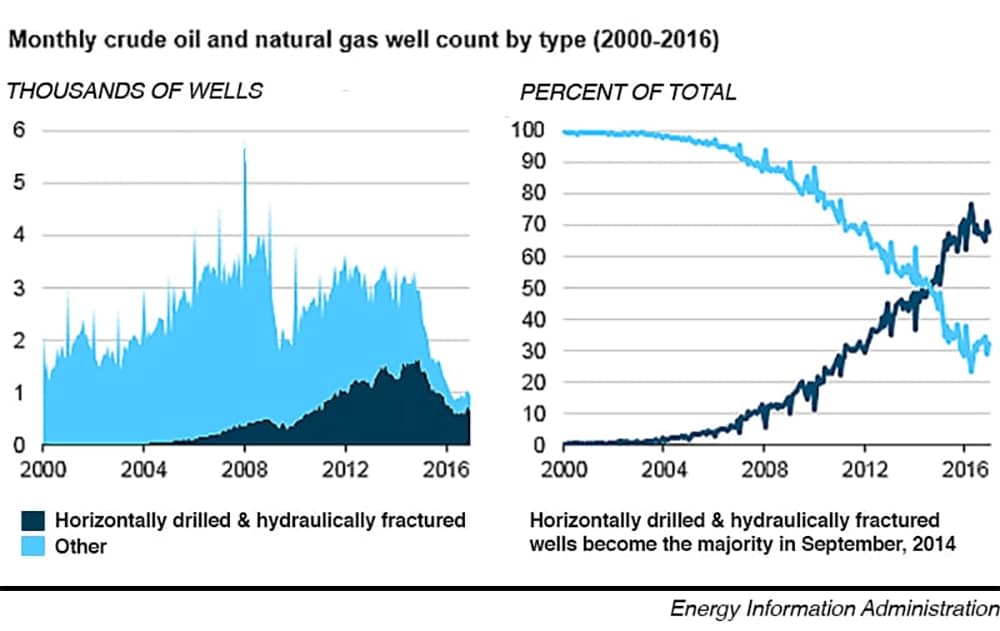
Of course, it could be a complex combination of all of these factors. Further clouding the picture is that some researchers argue that the spike in concentrations isn’t really a spike at all. Rather, they say, the pause in growth from 2000 to 2006 is the true anomaly. By this reckoning, what happened in 2007 was a return to a “normal” trend of anthropogenic-driven growth, perhaps compounded by a slowdown in the chemical removal rate of methane. If so, then methane will keep on accumulating, like the water in a bathtub with an open faucet and a plugged drain.
These ongoing scientific disputes reveal the problem at the heart of the methane mystery: Multiple stories can be made to neatly fit the available evidence. “Really good observations can be interpreted in ways that seem contradictory,” says Kort. To sort through it all, scientists must balance the information provided by various categories of clues.
Top-down estimates are based on observations using sensors on towers, aircraft, or satellites, and models that account for the downwind transport of emissions from sources and chemical reactions with other components of the atmosphere. Bottom-up methods involve measuring emissions near the source (a gas well, landfill, even a cow’s gut) and extrapolating from those to estimate emissions at broader scales.
Tracers also offer important clues. Carbon monoxide is co-emitted with methane from wildfires and biomass burning, and ethane is a hydrocarbon that’s often co-emitted with methane from oil and gas production. Methyl chloroform is an industrial solvent that, like methane, can only be removed from the atmosphere by reacting with OH; its emissions are much better known, so it’s used to infer how much OH is in the atmosphere. Researchers rely on easier-to-measure proxies to make inferences about changes in sources or sinks of methane. For instance, some have pointed to observations of increasing ethane concentrations to argue that fossil fuel extraction is the dominant driver of the methane spike.
Then there are the isotopes. After being analyzed at Dlugokencky’s lab, those air samples are sent over to the Institute of Arctic and Alpine Research (INSTAAR) at the University of Colorado Boulder, where their carbon isotopes are measured. “Isotopes tell you how much is coming from microbes versus old, thermogenic sources, carbon that’s been cooked by the earth,” says Bruhwiler. Methane emitted by microbial sources (also known as biogenic) tends to be lighter, with less of the carbon isotope C13 relative to C12, whereas methane from fossil fuels (thermogenic) and from burning biomass tends to be isotopically heavier. Measurements by INSTAAR and other research institutions clearly indicate that the atmosphere’s methane is becoming more depleted in the isotope C13. That can potentially winnow down the list of suspects.

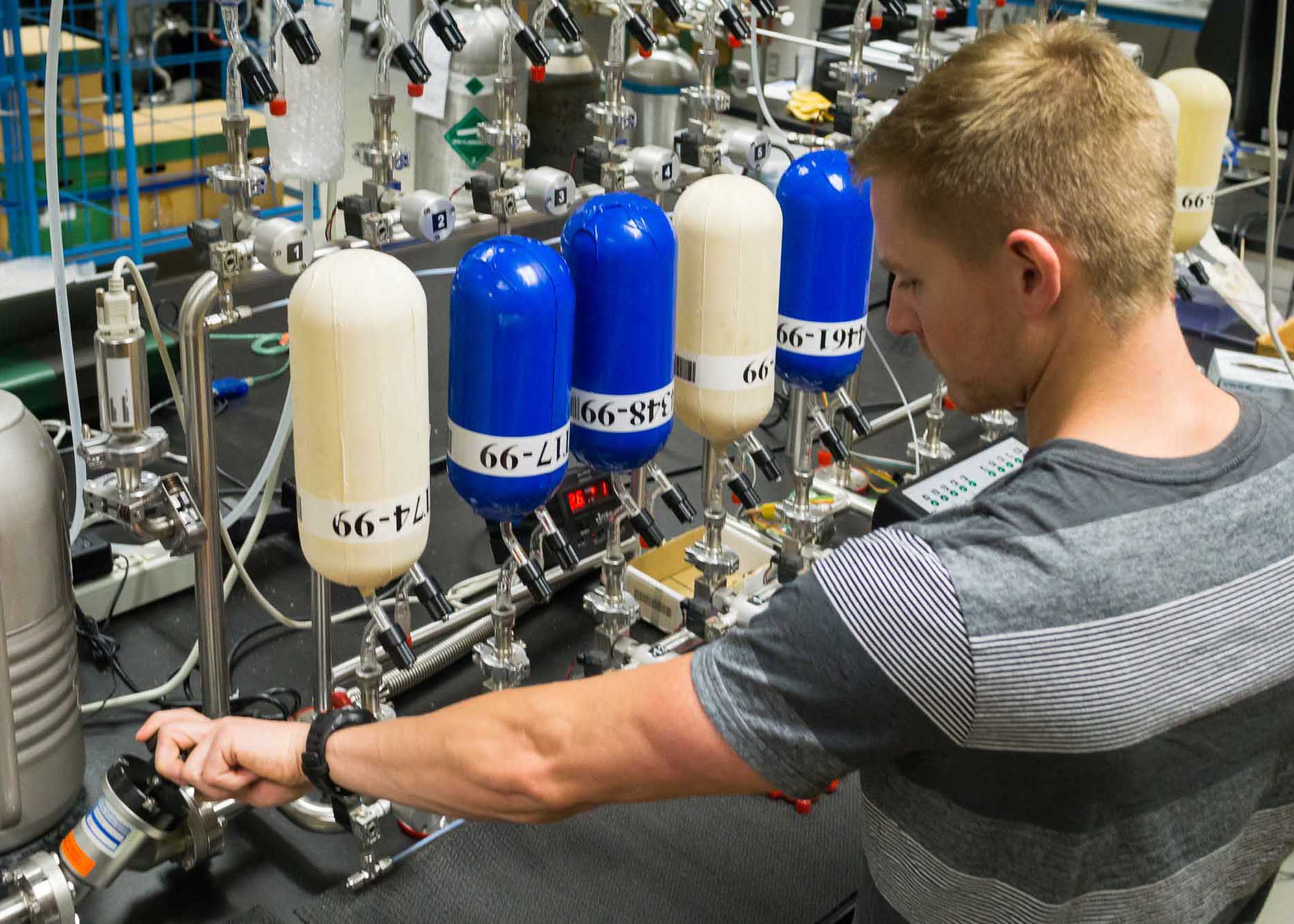
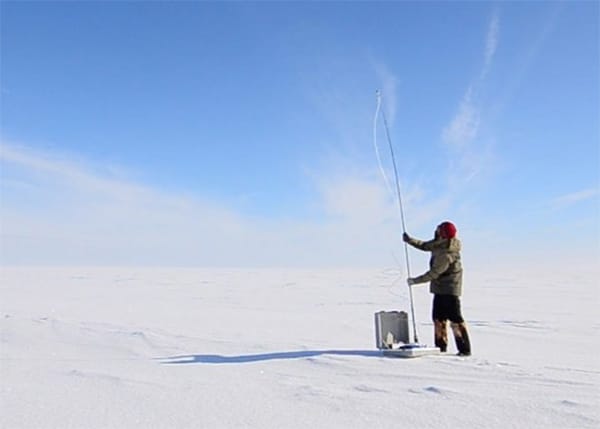
Yet each type of clue has its limits. Recent work by Kort and others has called into question the reliability of ethane as a useful, consistent tracer of methane. Ethane-to-methane ratios vary widely across different geological basins, and the amount of ethane extracted from natural gas changes depending on its market value as a petrochemical feedstock. Not everyone is convinced by the isotope data, either.
“A lot of the community is highly skeptical because the signatures of sources cover a pretty high range,” says Daniel Jacob, an atmospheric chemist at Harvard. Some sources share the same set of isotopic fingerprints, making it hard to distinguish between certain fossil and microbial sources. “Isotopes are a useful piece of information, but I wouldn’t bet the house simply looking at the isotope data.”
Bruhwiler concedes that there is uncertainty in the isotope record, and very few studies have measured the isotopes of methane from cattle and other ruminants, or bubbling out of wetlands. But she argues that isotopes of fossil fuel methane occupy a very narrow range of signatures, limited in its overlap with microbial sources.
“At large global scales, the isotopic constraint should be pretty darn useful at telling us what is biogenic and what’s thermogenic,” she says.
Amidst all this uncertainty, there is one part of the global methane budget that is more clearly quantified: emissions from U.S. oil and gas production. That’s largely thanks to the work of Steven Hamburg and the Environmental Defense Fund (EDF).
In the early 2000s, Hamburg was a professor of environmental science at Brown University. For a forest ecology course he taught, he drove students out to a field site each week in a natural gas-powered van. Later, he had an epiphany: While it seemed a cleaner, more efficient option than a gasoline-fueled vehicle, he had no idea how much gas it might be leaking. But he knew that leak rate mattered for the climate. Hamburg understood that methane was a powerful driver of near-term warming, and as an ecologist, he also knew that the rate of change in a system can be just as important as the magnitude.
Despite its potency as a warming accelerator, tackling methane leaks wasn’t yet a top priority in climate policy circles. “There was an opportunity,” he says, “a large lever sitting there that people couldn’t yet see and use. We recognized that lever existed.”
When he became the chief scientist of EDF in 2008, he started asking around for data on oil and gas supply chain leaks. “I got a standard reply from companies: ‘We’ve got it covered, we know what’s going on, it’s fine.’ As I poked around, there was no good data that anyone could show me to back that up.”
In 2012, EDF launched a program to support the in-depth study of methane leaks throughout the U.S. oil and gas supply chain. The effort has brought together more than 140 different scientists from over 40 academic and research institutions, yielding more than 30 peer-reviewed publications and a much more finely grained understanding of how much methane leaks, and where, from fossil fuel extraction throughout the country.
The culminating piece of research, published in Science last July, drew on ground-based measurements and observations from aircraft to estimate that methane emissions from the sector are 60 percent higher than estimates from inventories maintained by the federal Environmental Protection Agency (EPA). That figure amounts to a leak rate of 2.3 percent of total natural gas production in the U.S. A leak rate of just 4 percent would cancel out the climate benefits of burning gas instead of coal to generate electricity.
At the global scale, though, data on fugitive oil and gas emissions remains sparse. For example, there are few measurements of, and very little research access to, gas fields in Russia and Iran. Years ago, Hamburg chatted with Harvard atmospheric scientist Steven Wofsy about the problem. What level of spatial granularity, they mused, would be needed to see and pinpoint leaks from oil and gas fields and large facilities from space?
That’s how MethaneSAT was born. Last year EDF announced that it would build and launch its very own methane-hunting satellite. “The metaphor I often use,” says Hamburg, “is we’re trying to get away from a handcrafted small-factory model, and we need to go to mass production. It’s too expensive and labor-intensive to deploy scientific teams [at the global scale].”
Today, Wofsy is the science lead on the project. With a chuckle, he concedes it’s an extremely ambitious, “bonkers” undertaking — an environmental nonprofit trying to pull off a NASA-scale project. “EDF is very strategic,” he says, with admiration. “Their goal is to transform the oil and gas industry in the entire world by 2025.”
Recent work by Stanford researchers suggests that more than half the volume of all methane emissions from natural gas come from just the largest 5 percent of leaks. Even if the actual number is somewhat lower, there is wide agreement among researchers that that tackling these “super-emitters” could be the most cost-effective methane reduction strategy. But first you have to find those plumes. MethaneSAT will be hunting for leaks over oil and gas fields that might amount to just 10 parts per billion, against a background of 1,850. “So you’re looking for about 0.5 percent. If you’re going to measure 0.5 percent, you have to have precision of about 0.1 percent,” Wofsy says. “And some people think you can’t do that. We think we can — not at every point in the field but at a regional scale.”
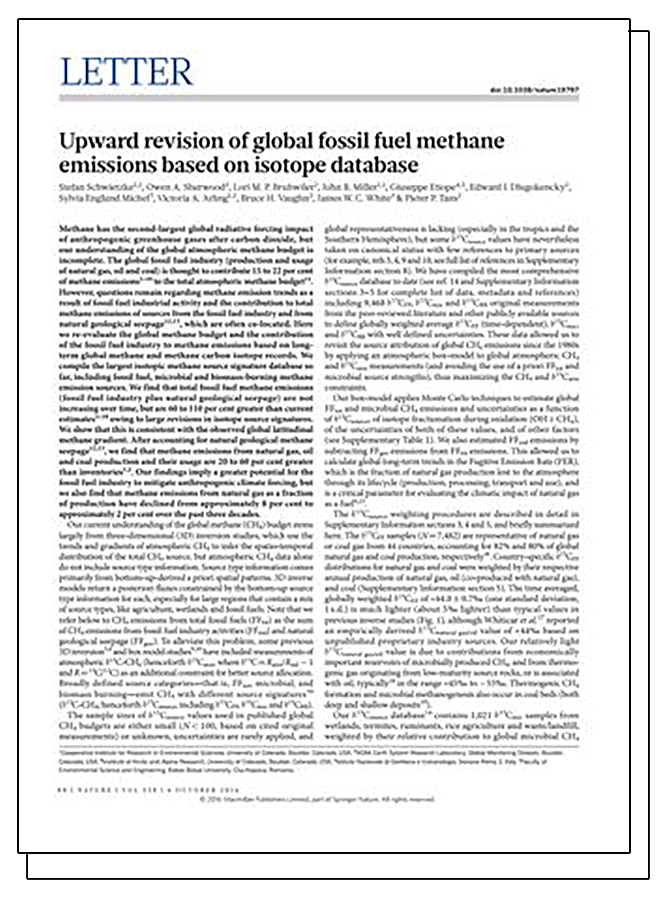
An influential 2016 paper found that while oil and gas leaks aren’t responsible for the global uptick in methane emissions, they are a much bigger problem than previously thought.
Another unprecedented feature of MethaneSAT is that the data it captures will be made publicly accessible. “Our product is change in the oil and gas industry, and what motivates that change is transparent information about what they emit,” says Wofsy.
Of course, the satellite is still on the drawing board, and many technical hurdles loom. Even if everything goes according to plan, MethaneSAT won’t start producing actionable data until late in 2022.
Still, there’s some evidence it may already be having a focusing effect in some corners of the industry. Fiji George, the head of climate and sustainability at Cheniere Energy, the largest exporter of liquefied natural gas in the U.S, has had a long career in the sector, including stints at Shell Oil and Southwestern Energy. “Once you have this satellite technology,” George says, “in 2022 Steve Hamburg could come along and say, ‘Hey, this facility, we mapped it every 14 minutes and found loads of emissions.’ Without knowing whether it’s permitted emissions, or a maintenance event, or a stochastic event — that creates more uncertainty and concern and pressure on industry.”
If the technical challenges can be overcome, George sees new methane detection technologies as something the industry should embrace if it wants natural gas to have a place in the energy mix decades from now, and in a world that takes the Paris climate targets seriously.
“If this is successful, five years from now we’ll have a very different prospect in terms of being able to understand what’s driving these changes” in global methane, says Wofsy. “Then someone could build another one for half the cost and use it for a different mission. You could start to go after the agriculture sources, landfills, the wetlands. You could look at any of them.”
While there is no definitive indictment yet, the community of methane detectives seems to be getting closer to ruling out one key suspect. “The attribution that was pretty popular a few years ago was increasing natural gas,” says Daniel Jacob, citing the combination of isotopic evidence and atmospheric inversion models by his group and others. “That’s gotten the wind knocked out of its sails a bit. We really don’t see evidence for that.”
Some researchers, such as Robert Howarth of Cornell, remain convinced that fugitive emissions from oil and gas production — especially fracking — are systematically underestimated, and likely to be behind the global spike. “It’s a compelling narrative,” says Pep Canadell, executive director of the Global Carbon Project, “but the larger community does not support that view.”
In an influential 2016 paper in Nature, a large group of scientists led by Stefan Schwietzke, a former NOAA scientist who now works for EDF, pulled together the largest set of long-term data on isotopes from all methane sources — microbial, fossil fuels, biomass-burning. They found that fossil fuel methane emissions were at least 60 percent greater than previous best estimates, but were not increasing over time.
It’s a counterintuitive point of arrival. Oil and gas leaks aren’t responsible for the global uptick, yet they are a much bigger problem than previously thought. And plugging them remains one of the most feasible ways to cut methane. The International Energy Agency estimates that as much as 50 percent of all oil and gas methane leaks could be fixed at zero net cost.
Even as suspicions shift away from fossil fuels, they are coalescing around tropical wetlands, the biggest global source of methane. “When methane started going up, shortly after that, C13 started going down,” says Dlugokencky. Whatever is driving the increasing concentrations “has to be a source of methane that’s lighter than the average mix of emissions to the atmosphere. What could do that? Microbial sources like wetlands or ruminant animals.”
Tropical wetlands may be the only source big and dynamic enough to explain both the magnitude and suddenness of the spike. It’s unlikely that the numbers of livestock, the other big biogenic source, have increased fast enough to account for it.
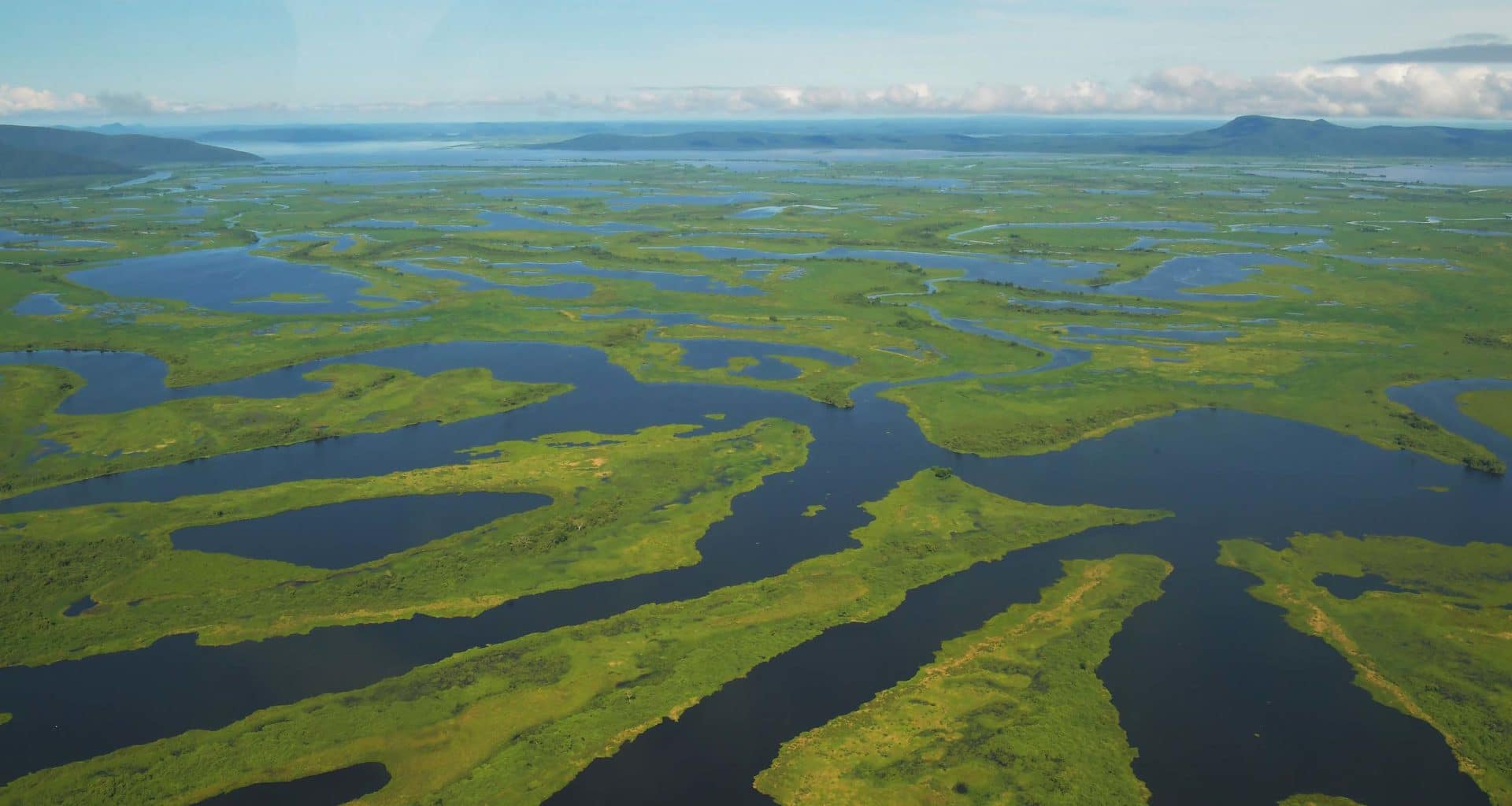
Methane production from wetlands, however, can change rapidly from year to year, in response to meteorological shifts. Microbes in wetlands might be producing more methane in response to increased precipitation, or warmer temperatures, or both. Or wetlands might be growing in area, inundating more and more land surface, whether due to El Niño events or other climatic variables.
“Wetlands is the ultimate potential carbon climate feedback that we don’t fully understand,” says Canadell. Scientists agree that models of these processes are getting better, but still need a lot more work.
To map the distribution of wetlands, researchers have relied on old aeronautical charts of questionable accuracy, says Bruhwiler. They also use satellite images to identify areas that are inundated on land, but those are of limited use in the tropics, where overlying vegetation and heavy cloud cover can mask standing water. And scientists still know very little about the various isotopic signatures of microbial methane from wetlands.
In the long-term, EDF-led collaborative effort to study oil and gas leaks, Eric Kort sees a potential research roadmap for tackling these sources of uncertainty. “This series of targeted studies looking at oil and gas basins at a number of scales have improved our understanding of emissions and the processes that control that,” he says. “The same measurement approaches can be used to improve our understanding of wetlands.”
“My personal feeling is that the evidence is strongly pointing to a natural biogenic source behind the increase,” says Bruhwiler. “And if this is true, that’s important, because it may be an indication that there is a climate feedback going on between the natural terrestrial biosphere and warming.”
As the world warms, and parts of it get wetter, will microbes in tropical wetlands cough up even more methane? Will the ones hibernating in the Arctic permafrost release more of that vast store of frozen carbon as methane than carbon dioxide, spurring further warming? Such runaway-train feedback mechanisms are the elements of the global climate system that keep scientists awake at night. “The most important science question we face now is the question of carbon-climate feedbacks,” says Bruhwiler. “The question that’s really important is, what’s coming down the road?”
That’s why solving the methane mystery matters. Looking for human fingerprints on these “natural” methane sources will help us understand what the future might hold. Yet even if new detection tools definitively identify wetlands as the main driver, our task would remain the same: in addition to rapidly cutting carbon dioxide and other greenhouse gases, reduce methane emissions as far and fast as possible, from those sources we can control.
Despite all the arguments over what’s driving the increase since 2007, says Kort, “over longer time frames there isn’t any debate. It’s driven by human activities. In the last 40 years, the rise over that period is solely best described by anthropogenic emissions. Those statements are not really controversial.”
“The main thing we stress, while we sort through this scientific debate,” says Hamburg, “is that it doesn’t in any way reduce the ability to mitigate methane from particular sources, and to understand their impact on the climate.” That means aggressively finding and fixing leaks from oil and gas infrastructure, he says. It also means transforming the way we grow, consume and dispose of food, Pep Canadell emphasizes.
Two new studies published in February seemed to reinforce the urgency of plugging leaks. In their recent paper, Dlugokencky and colleagues concluded that, regardless of whether it’s due to a changing sink or changing tropical wetlands, the renewed growth in methane scrambles plans to meet the target of staying under two degrees of warming over preindustrial levels — the target agreed to by nations gathered in Paris in 2015. Methane’s wild climb leaves much less room — and less time — in our global emissions budget than we expected to have.
Another new study, however, offers some measure of hope, citing modeling that shows that reducing anthropogenic methane emissions can still offset the “natural” leakage that the thawing Arctic will produce under warmer temperatures. If true, it would suggest that a disastrous feedback loop — in which human-driven greenhouse gases emissions melt the planet’s permafrost, turning it from a vast carbon storage unit into a huge new source of planet-warming methane, driving further warming — might yet be averted. But scientists also say the time available for avoiding that runaway train scenario is quickly disappearing.
“The bottom line,” says Canadell, “is that methane is going up, and doesn’t look like it will stop anytime soon.”
Jonathan Mingle is a freelance writer whose work has appeared in The New York Times, The Boston Globe, Slate, Quartz, Atlas Obscura, and the Los Angeles Times. He is the author of “Fire and Ice: Soot, Solidarity, and Survival on the Roof of the World,” about the health and climate effects of black carbon pollution.










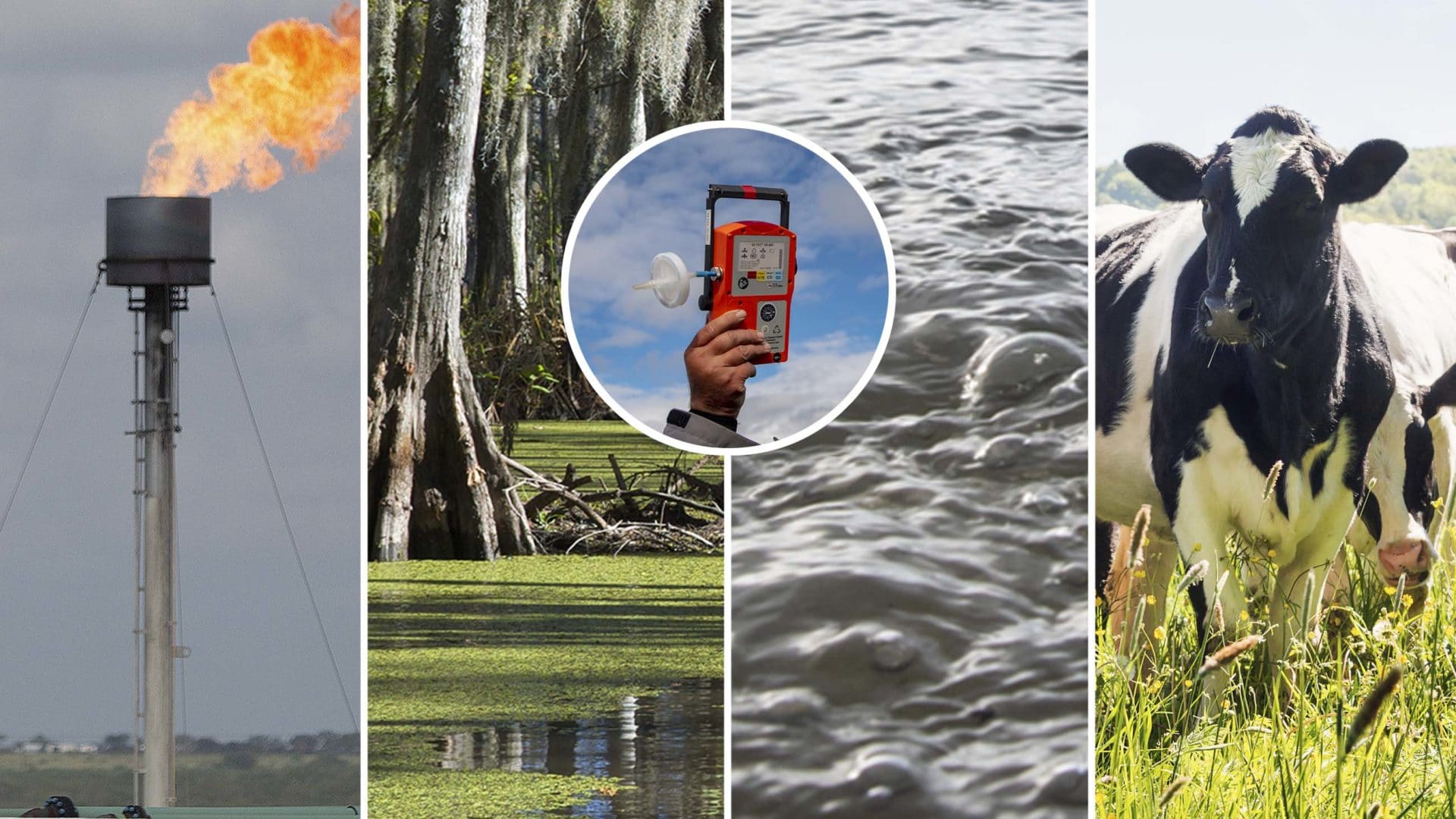
Comments are automatically closed one year after article publication. Archived comments are below.
I’m curious why NASA’s finding that: “17 teragrams per year of the increase is due to fossil fuels, another 12 is from wetlands or rice farming”
https://climate.nasa.gov/news/2668/nasa-led-study-solves-a-methane-puzzle/
.. was not included in this article? Did I not read closely enough? Also as nations who have shale plan to start hydraulic fracturing – who will police the production leakage rates in places like Iran, Algeria. We plan a 50% expansion of fracked gas use globally over the next 2 decades – is it really a good idea to answer too much greenhouse gas emissions to fire up a new global methane industry? No study has been done on the impacts of a fully installed global methane industry – and it’s production leakage rates – on climate warming. In fact no study is possible since so many data points would be missing. We can’t even agree on production leakage rates are in the US, after a decade trying.
Maybe, it is just me, but common sense logic should tell us the real fact. The planet has 7 Billion humans living on it..,7,000,ooo,000. We proudce methane just like any other living organism. We have to feed ourselves; hence the livestock farming, rice paddies, etc.
Unfortunately for us, the smart ones, global warming/climate change is going to happen anyway. I don’t think we can take a look at the Ice Age and see humans as having anything to bring that on. No drilling, no fracking, no airplanes, no commercial farming, no composting, no medical waste, no open mines…
It is truth to say that our consumptive taste for convenience can be measured in terms of plastic. Plastic payments and trash easily thrown away…as long as it isn’t our house, we don’t care. But, although our diligence will have little effect on the normal routine of our planet’s life cycle, we should honor and cherish our beautiful garden.
A quick look at the Vostok ice core data shows that methane and CO2 both increase during interglacial periods. Since the climate alarmists never bother to look at historical climate over a reasonable time horizon, like a couple of million years, they are of course surprised that methane levels are increasing. Since they have no good theory to account for glacial and interglacial periods and are morally and scientifically bankrupt, it’s not surprising that they will try and blame methane on humans.
Drugs, medicines and even alcohol have an effect in doses of milligrams against an adult body weight of say 80kg. We do not question that these ratios can cause an affect on us. Why is is so hard for some to believe that a doubling of methane will also have an effect. However I do question blaming livestock and agriculture because before livestock there were herds of antelope, bison, buffalo millions strong on every continent and any land converted to crops had existing vegetation before the cropping. I suspect the satellite will find that Oil/Petro/chemical industry is the source of much of the extra methane. Methane emissions may now be naturally multipliying due to faster decomposition of organic matter due to rising temperatures caused by these industries.
This curve https://en.wikipedia.org/wiki/Arctic_methane_emissions
seems similar to the “Average Atmospheric Methane Concentrations” curve in this article.
Great article… Pity about the comments. Go back to the old ways… Letters to the editor
I have another mystery for you. Why is it that we’re still reading global warming articles when there hasn’t been any global warming for 20+ years? I know, we get it, it’s now called ‘climate change’ to cover anything and everything, but seriously. Now that we all know that the ‘global warming’ religion has been debunked over and over and over again with manipulated data and bias weather models, you’re just shooting a dead horse with these type of articles. Whether you’re talking about CO2 or methane any other small percentages of man-made gas in the atmosphere, they’re small percentages that only some scientists have agreed to jump on that catastrophic bandwagon. Once again, these bombshell articles are just asinine. You could probably pick any gas in the atmosphere, cherry pick data for few years, create some more bias weather models, and come with any number of earth ending scenarios. Fact is, you’ll have just as many scientists proving you otherwise as we currently do with CO2 levels.
This only always boils down to money and big government control. Period. The changes that this earth goes through over centuries and millenniums weren’t created by humans and can’t be adjusted by humans or governments. The changes that humans have tagged as ‘global warming’ or ‘climate change’ are natural occurrences, normal natural cycles, and normal, natural, self-correcting, well-designed changes. No, it’s not too late to take care of our planet. We should all pick up after ourselves. Nobody will disagree with that. But, this catastrophic fear mongering of world ending scenarios HAS TO STOP. One way to get it stop, at least in America, is to stop voting for loony, power hungry politicians that keep perpetuating the scam.
Listen to yourself for once mate.
… “natural, normal, self-correcting” … in a word, regulated.
For-profit humans have jacked with the regulator before realizing how little heat we can take.
There’s your “money”, and the PTB have the best government and law that money can buy.
Although living in fear is useless, the Titanic would have fared better with due diligence.
Just more fake science… Physics proves that CO2 and Methane have nothing to do with climate! These frauds are swindling the gullible public!
Nobody wants to factor in the effects of the sulfur and CFC regulations initiated in the early 90s and followed by the rapid industrialization of China (which has ramped up manufacture CFCs despite the global ban) the decrease in aerosols is not something that fits the carbon narrative.
Isolating the good information herein is we can demand frack fuel is obtained without leaks.
Otherwise the information has leaned far towards methane as the product of the temperature
rise already achieved & is happening now constituting the “do something” timetable.
More correctly is the doing SomeThings Now.
We do not have an effective Government of Governments.
The way to get a Government of Governments is to ban the bomb. This would mean
a fund for permanent war of enforcement of that ban.
It would mean once there is an international force & fund concurrent to the permanent war
of enforcement of the ban a concurrent funding of technology & systems would be possible.
Find the nation with nuclear weapons that has the fewest. Bring all nations down to that number
and move from there to total elimination.
Both Nukes and Climate change are existisitential threats to human civilization.
Hence it follows combining them into an international organization to be limited is pragmatic.
Could the source of methane come from the vast amounts of methane hydrate in the ocean which could be starting to degas?Could real time detection of methane, allow researchers to follow the concentration gradient directly to source? One of the mars lander has methane detecting instrumentation which gives real time analysis of methane. Does drager make ampules to detect methane? Could microbiological methods be used to engineer wetland microbiome so as to have a microbiome with bacteria that metabolized ch4 into c02?Bacteriaphage which attack methanogens could be applied to wetlands to reduce methane generating bacteria, and cultures of methane metabolizing bacteria could be applied to wetlands.
In an enclosed structure with minimal air movement, a detector kit could find the source; but in the grand outside, you would only chase the wind:
https://www.windy.com/
Perhaps satellites with spectrometry or similar could spot methane regions; but I suspect coexisting water vapor would “cloud” the view. Water vapor itself is one of the most potent GH gases, but the effect is short-lived.
Anytime you mess with Mother Nature at scale, e.g., engineering wetlands or other large spaces, especially fooling with biodiversity, you will reap unintended consequences at scale. Unfortunately, the gene pool has no lifeguard.
The greatest solution to “climate change” – intensification of whatever the climate is doing right now – is to stop the greed-based causes, rather than merely ameliorating them (and allowing them to continue) with risky fixes.